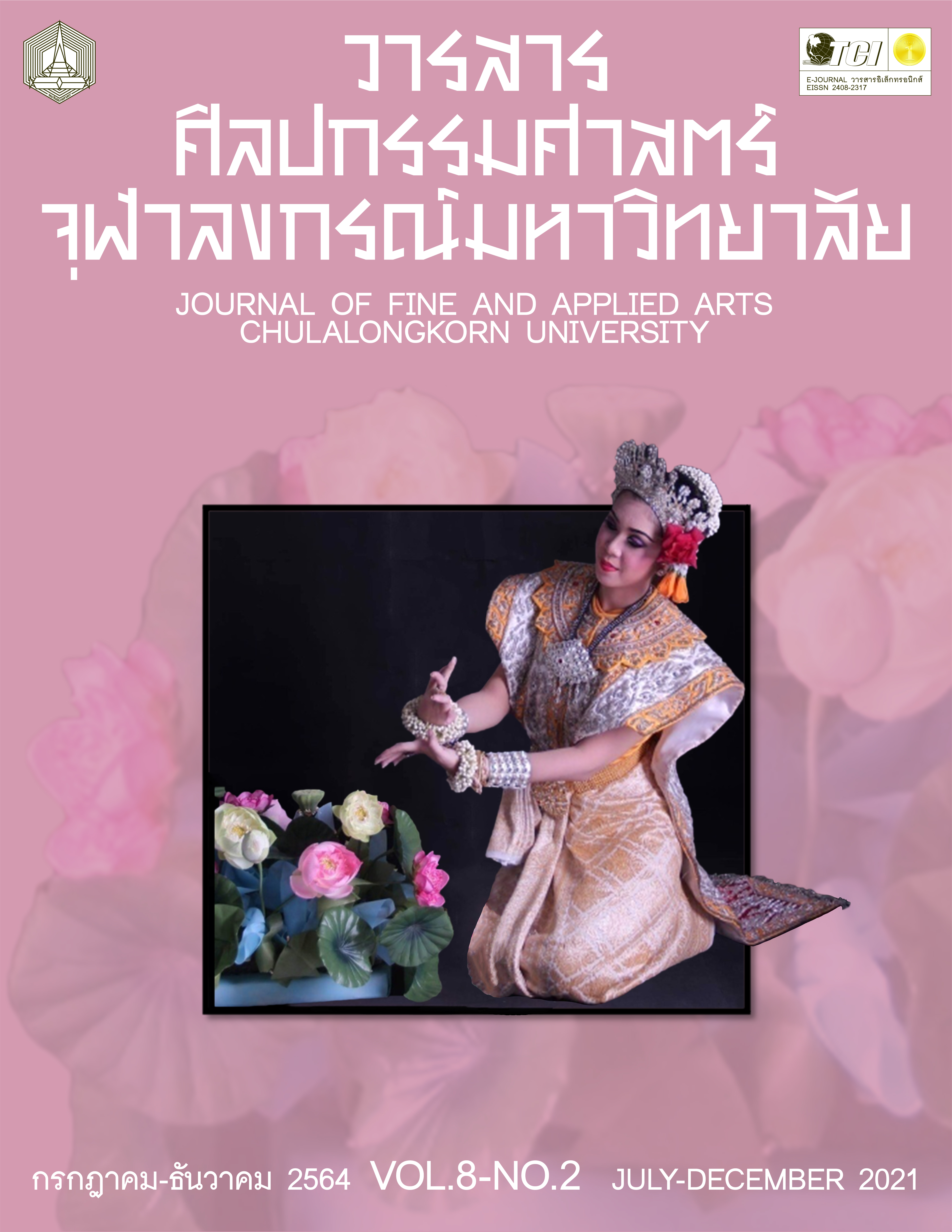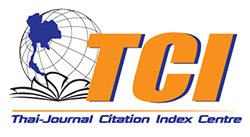THE WOMAN DRESS IN BABA CULTURE CALLED BAJU PANJANG
Keywords:
Gown, Baju Pangjang, Baba Ethnic, Batik Sarong, CostumeAbstract
This article is the study of dressing culture of the Baba women, a Thai – Chinese ethnics in the southern part of Thailand, by reviewing related documents, interviewing locals, and observing the old photos. The researcher focused on exploring about the gown worn by Baba women in the early age called Baju Panjang. The gown is loose and long to the calf of the leg. It is long sleeved blazer with no button from the collar to the edge, yet the plackets are held by the pin called Korongsang. The Baba women mostly wear this gown in the important traditions e.g. wedding ceremony.
The evolution of Baju Panjang could be divided into phases: 1) Initial phase: the gown was tailored with dense silk, cotton, or satin in burgundy red or pastel pink; peony flower tracery embroidered with silk golden braid or golden braid as the flowers represent prosperity or some of the gown were embroidered in water wave tracery. The edge of the gowns was decorated by the rabbit fur. The gown is worn with the Malaya style Songket., 2) Changing phase: The gown was tailored with thick linen colored in light brown, dark brown, or brick red. The pattern of the fabric was the small tables. The gown is worn with the batik sarong called Lasem produced in Java Island, Indonesia. The Lasem are mostly penny brown or brick red with the tracery of birds, butterflies, flowers, and geometry shapes., 3) Developing phase: The fabric of the gown was changed to the thin linen which was more comfortable for the local weather of the southern part of Thailand. The popular colors were ivory, light blue and light pink. The gown featured the tracery of flowers and vines embroidered with thread looked like perforated; was worn with the batik sarong as mentioned above., 4) Developing phase: The new innovation has played important role in the society therefore there are various types of fabric to use. At the present, most of the gown is tailored with colorful lace. The most popular colors are red, old rose, blue, and dark pink. The lace was decorated by sequins in the tracery of flowers. The gown is often worn with the batik sarong of colorful printed tracery with golden liners or sequin embroidered. From the past to present, the Baba women wear Baju Panjang with ornaments made from various materials upon their social status e.g. gold, diamond, and other jewelries.
In the past, Baba women mostly wore Baju Panjang only for important occasions as the fabric used to make the gown was quite expensive and needed to import from other countries including German organdy, Middle – east muslin, and Indonesian fine hand painted patek. The price of these fabrics may be up to more than ten thousand bahr depending on their quality and design. Nowadays, the development of technologies and innovations have played an important role in the human lives. The clothing industry can produce various styles of clothe to meet the needs of women. However, Baju Panjang is not picked to wear in the wedding or other important occasions as in the past anymore. The increasing in quality and design of the gown has made it to be used as the signature cloth in both national and international beauty contests. Moreover, the traditional cloth rental business which is a part of cultural tourism also generates lots of income to the community.
References
ขนัด หวังเกียรติ. “ผ้าโสร่งปาเต๊ะแบบโบราณ.” สัมภาษณ์โดย วิกรม กรุงแก้ว. 20 กันยายน 2562.
งามพิศ สัตย์สงวน. หลักมานุษยวิทยา. พิมพ์ครั้งที่ 4. กรุงเทพฯ : รามาการพิมพ์, 2544.
จิรศักดิ์ อังคะทายาท. “การประกอบธุรกิจเช่าซื้อเครื่องแต่งกายพื้นเมือง.” สัมภาษณ์โดย วิกรม กรุงแก้ว. 27 สิงหาคม 2562.
ธีระเดช ชายภักตร์. “ผู้สืบทอดการประดิษฐ์มงกุฎดอกไม้ไหว.” สัมภาษณ์โดย วิกรม กรุงแก้ว. 7 ตุลาคม 2562.
พัฒน์ จันทร์แก้ว. “ชาวจีนในภูเก็ต บรรพชนผู้สร้างเมือง.” ใน ภูเก็จ 33, กรุงเทพฯ : เอดิสัน เพลส โปรดักซ์, 2533.
ฤดี ภูมิภูถาวร. วิวาห์บาบ๋าภูเก็ต. กรุงเทพฯ : เวิลด์ออฟเซ็ท พริ้นติ้ง, 2553.
วิกรม กรุงแก้ว. พัสตราภรณ์ยอนหยา. กรุงเทพฯ : โอเอส พริ้นติ้ง เฮ้าท์, 2560.
สุภางค์ จันทวานิช และคณะ. ชาวจีนแต้จิ๋วในประเทศไทยและในภูมิลำเนาเดิมที่เฉาซันสมัยที่ 1 ท่าเรือจางหลิน (2310-2393). กรุงเทพฯ : สถาบันเอเชียศึกษา จุฬาลงกรณ์มหาวิทยาลัย, 2534.
Tong Lillian. Straits Chinese Gold Jewellery. Malaysia: Eastern Printers Sdn Bhd, 2014.
Downloads
Published
Issue
Section
License
ลิขสิทธิ์ของบทความเป็นของเจ้าของบทความ บทความที่ได้รับการตีพิมพ์ถือเป็นทัศนะของผู้เขียน
กองบรรณาธิการไม่จำเป็นต้องเห็นด้วยและไม่รับผิดชอบต่อบทความนั้น






